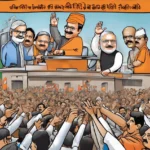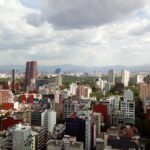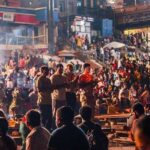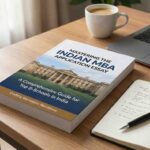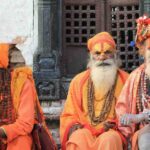Lucknow, 2025 — Uttar Pradesh (UP), a state synonymous with cultural richness and political significance, has long been at the heart of India’s identity. With its deep historical roots, religious landmarks, and vibrant traditions, UP’s culture heavily influences its politics and vice versa. This dynamic interplay shapes not only the state’s identity but also the broader narrative of India. This article explores how UP’s unique position at the crossroads of politics and culture contributes to its identity and its impact on national discourse.
Cultural Legacy as a Political Tool
- Religious Significance
- Pilgrimage Sites: UP is home to some of India’s most revered religious sites, including Varanasi, Ayodhya, Mathura, and Prayagraj.
- Political Influence: These sites serve as focal points for political narratives. For instance, the construction of the Ram Mandir in Ayodhya has been a key political agenda, reinforcing Hindu nationalism in the state’s politics.
- National Impact: Religious-cultural politics in UP often set the tone for similar strategies across India, influencing voter behavior nationwide.
- Historical Importance
- Heritage Sites: Monuments like the Taj Mahal, Fatehpur Sikri, and Jhansi Fort embody UP’s rich historical tapestry.
- Symbolism in Campaigns: Politicians frequently evoke the state’s historical figures, such as Rani Lakshmibai and Ashoka, to draw parallels between their governance and UP’s glorious past.
- Cultural Festivals
- Events: Celebrations like Kumbh Mela, Deepotsav in Ayodhya, and Taj Mahotsav attract millions, reinforcing UP’s cultural prominence.
- Political Integration: Leaders often leverage these festivals to connect with citizens, using them as platforms to showcase governance and national pride.
Politics Shaping Cultural Identity
- Caste and Community Narratives
- Cultural Dimensions: Caste-based traditions and community identities often intersect with political discourse, influencing policies and electoral strategies.
- Example: The One District, One Product (ODOP) scheme supports traditional crafts like Chikankari and Banarasi silk, promoting both economic growth and cultural preservation.
- Education and Language Policies
- Promotion of Hindi: UP’s role in promoting Hindi as a national language underscores its cultural influence, often intertwined with political ideologies.
- Cultural Preservation: Policies aimed at integrating regional art forms and languages into educational curricula reflect the state’s effort to safeguard its identity.
- Representation in Cinema
- Bollywood Connection: With UP providing both stories and locations, its culture often finds representation in Indian cinema.
- Impact: Politicians frequently use cinema to reinforce regional pride and promote cultural heritage.
The Dual Impact: Cultural Identity in National Politics
- Unity and Division
- Cultural Unity: UP’s traditions serve as a unifying force, embodying India’s composite culture.
- Potential Divisions: The politicization of culture, however, risks deepening caste and religious divides, influencing not just UP but the national fabric.
- Cultural Diplomacy
- Global Stage: UP’s cultural landmarks, such as the Taj Mahal and Kashi Vishwanath Corridor, are central to India’s cultural diplomacy efforts.
- Political Mileage: Leaders often showcase these landmarks to emphasize India’s heritage during international visits and summits.
Challenges in Balancing Politics and Culture
- Over-Politicization
- Risk: Excessive politicization of cultural issues can alienate communities and dilute the authenticity of traditions.
- Solution: Promoting culture as a unifying factor rather than a divisive tool.
- Sustainability of Traditions
- Concern: Rapid modernization and urbanization threaten traditional art forms and practices.
- Response: Policies like ODOP and heritage conservation projects aim to balance development with preservation.
Conclusion: UP at the Crossroads of Identity
Uttar Pradesh’s politics and culture are inextricably linked, shaping the state’s and India’s identity on multiple levels. As a melting pot of tradition, religion, and governance, UP continues to influence national politics and cultural narratives. By fostering a balance between cultural preservation and political progress, UP can strengthen its role as a beacon of India’s rich heritage and democratic ethos.






